 Technology peripherals
Technology peripherals
 AI
AI
 Your brain really learns automatically while you sleep! The first human experimental evidence: accelerated replay by 1-4 times
Your brain really learns automatically while you sleep! The first human experimental evidence: accelerated replay by 1-4 times
Your brain really learns automatically while you sleep! The first human experimental evidence: accelerated replay by 1-4 times
I read a few pages or words before going to bed, and when I woke up, I found that I was deeply impressed.
I wonder if you have had similar experiences?

Scientists have always wanted to study this phenomenon, but they have been limited by technical conditions and have been difficult to collect weak neural activity signals in the human brain at night.
With the recent development of brain-computer interface data wireless transmission technology, the opportunity has finally arrived.
In experiments involving volunteers, researchers have obtained direct evidence for the first time that the motor cortex of the human brain "replays" daytime activity during sleep.
The first author of the paper, Daniel Rubin of Harvard Medical School, said:
What we found is incredible. He (the volunteer) basically practiced automatically all night while sleeping.
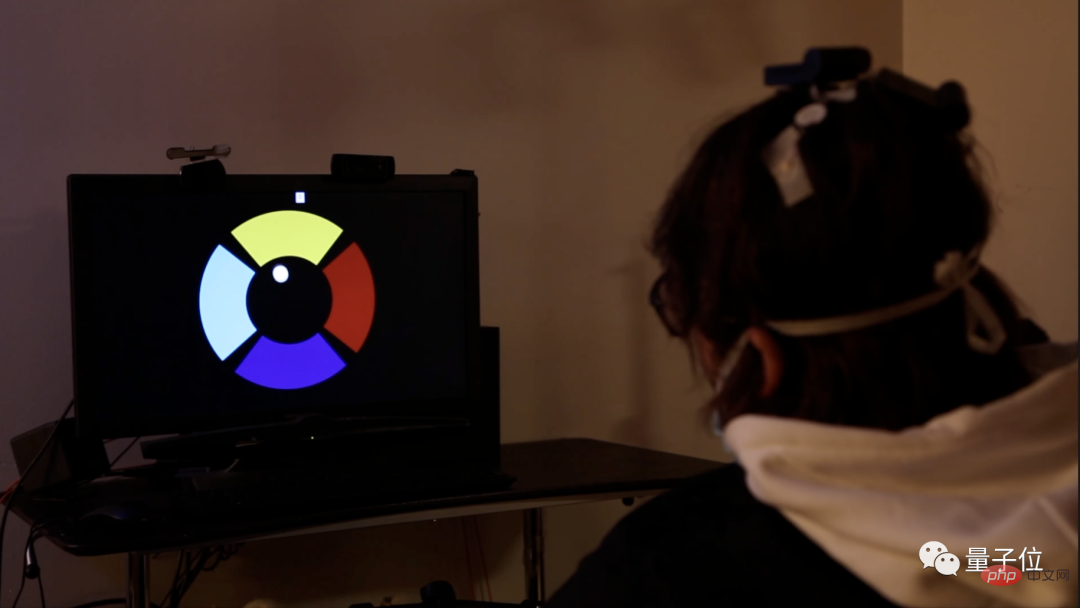
#Relevant papers have been published in The Journal of Neuroscience, a well-known journal in the field of neuroscience.

The brain speeds up learning while you sleep
This volunteer, codenamed T11, unfortunately became a quadriplegic due to spinal cord injury.
He was implanted with the invasive brain-computer interface electrodes from the BrainGate project team, which was the same set of equipment used by the T5 man who participated in the mind typing research last year.
In this experiment, T11 needs to play a simple video game during the day:
First observe the order in which the colored areas light up, and later control the cursor to move in order based on memory.

This is a classic task in brain-computer interface research. The pattern of neural activity is relatively easy to capture and identify, and has appeared in related research many times before.
For ten consecutive days, T11 needs to train from 13:45 to 16:00 in the afternoon, and sleep from 23:00 to 9:00 the next morning.

During training, the brain-computer interface can decode and record the neural activity of his brain’s motor cortex in real time.
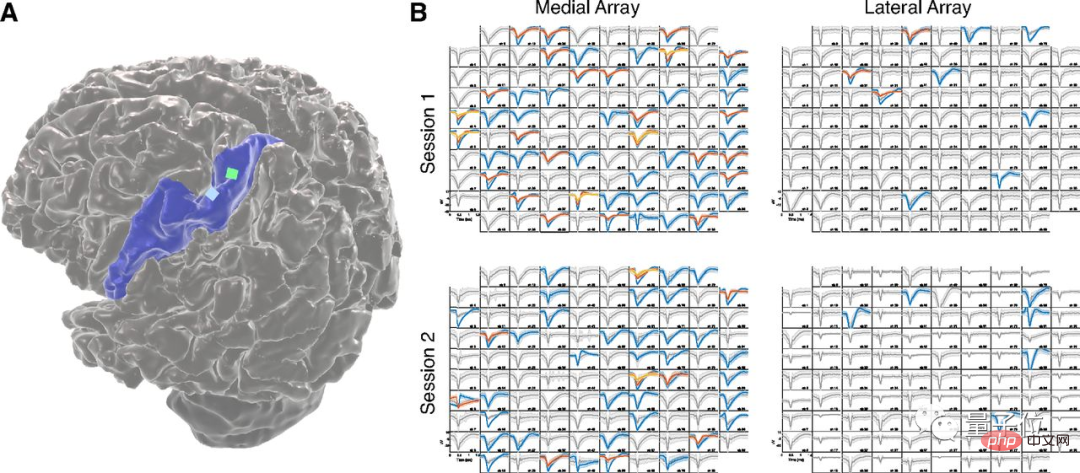
#T11 was not told the specific content of this experiment. He just assumed that he would do recovery training as usual and fall asleep as usual at night.
But during these ten days, the researchers compared the data recorded by the brain-computer interface while he slept with the data during the day.
After processing the data using methods such as Kalman filtering, it was found that neurons at night replay training content during the day at higher frequency intervals than expected.
The firing pattern of T11 neurons during sleep is highly consistent with that during daytime training, and is even completely consistent several times.
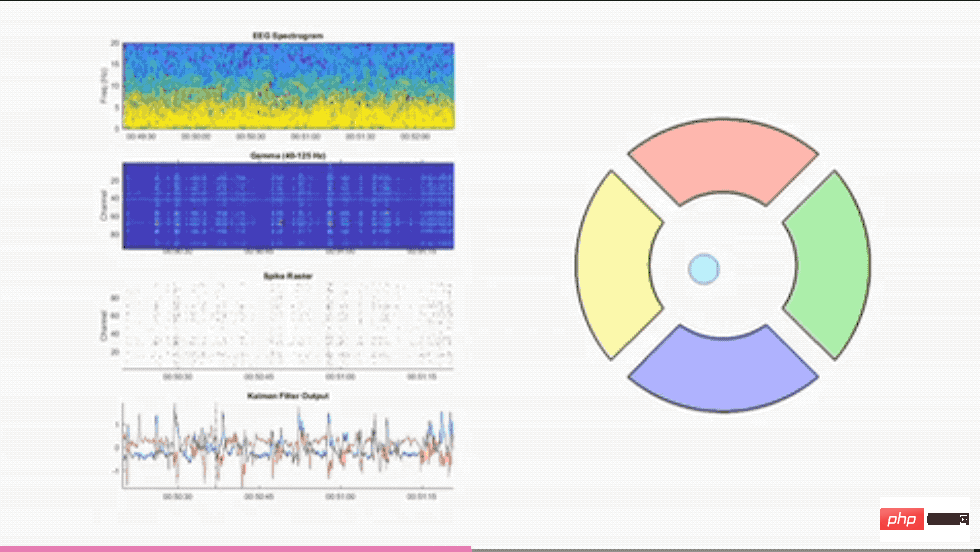
△Data and visual demonstration starting at 0:50 in the morning
The scientific name of this phenomenon is offline replay (offline replay), which has been previously reported in mice and humans are verified while resting during the day.
This is the first time that replay during human sleep has been observed.
And the data shows that the replay speed at night is 1-4 times faster than during the day.
That is to say, when you are sleeping, your brain is not only automatically learning what you learned during the day, but also accelerating learning.
And you yourself are completely unaware of all this.

The more difficult the task, the more active the brain
There are also a series of previous studies that have respectively verified that the neural activity of the hippocampus and neocortex during mouse sleep can Practice walking the maze.
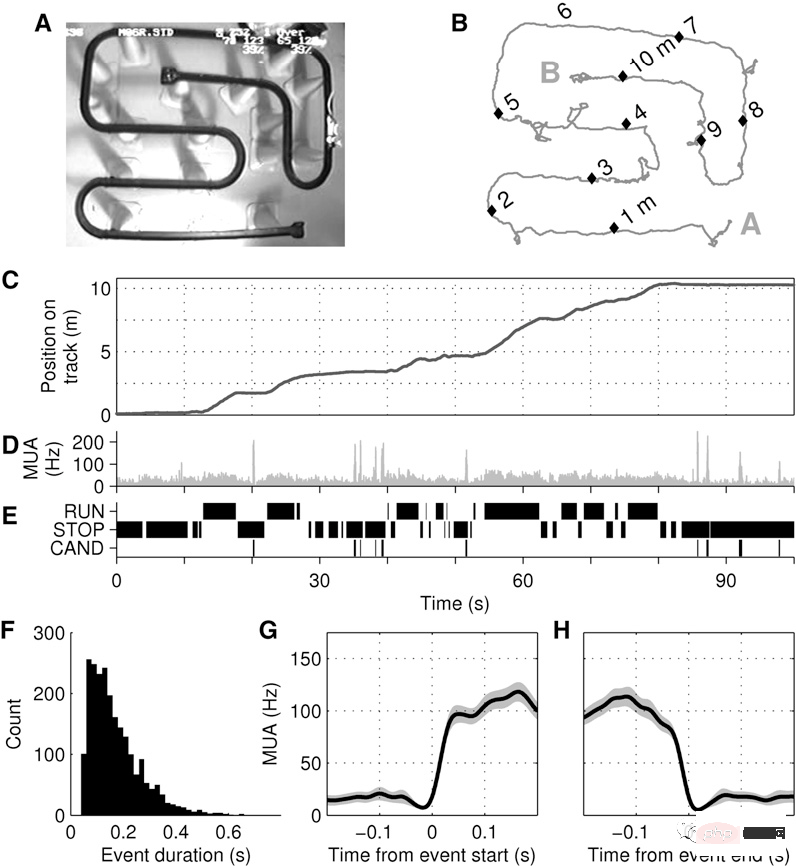
# and similar offline replay phenomena when humans are resting during the day.
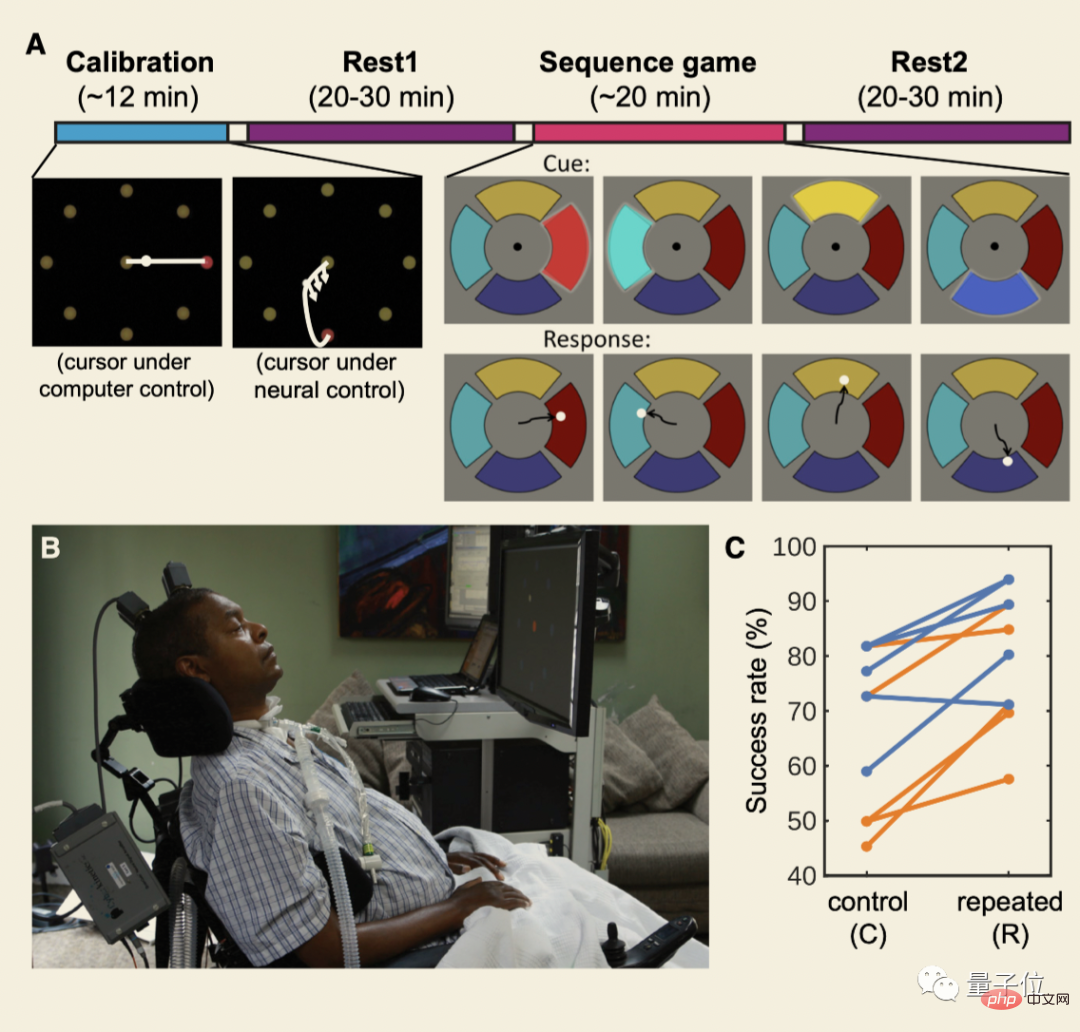
After combining these findings with experimental results, the researchers proposed the idea that replay learning may be a retention mechanism that spans multiple regions of the brain. , including semantics, navigation and motion control systems. And further supports the role of sleep in memory consolidation.
In addition, this study also verified several previous important findings:
First, replay occurs mainly during slow-wave sleep in the biological sense (Slow sleep). -wave Sleep), more commonly known as non-rapid eye movement stage (Non-REM Stage), or deep sleep.
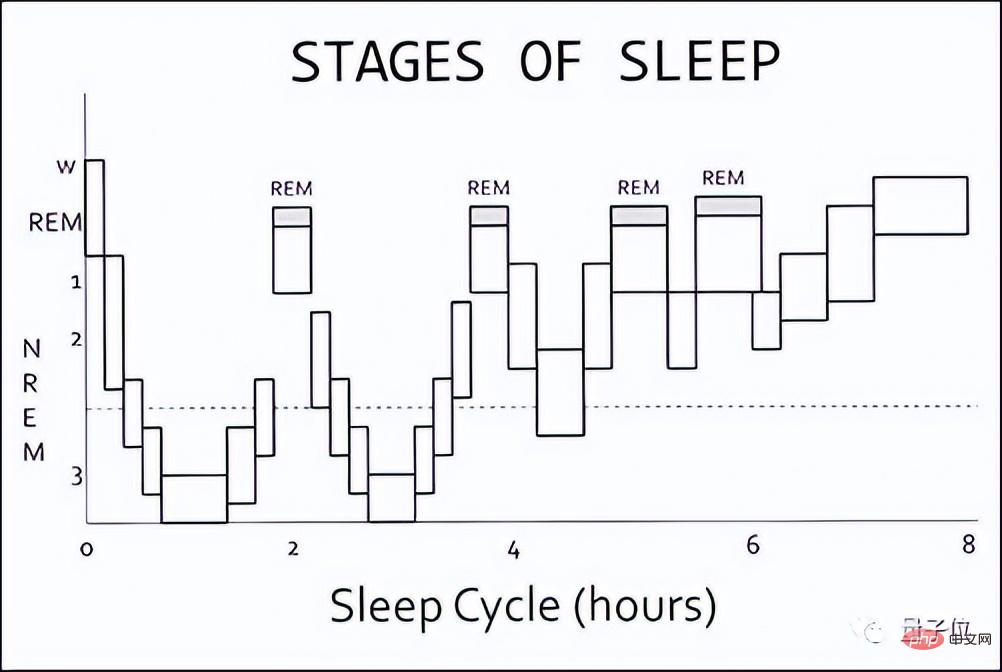 Second, replay activity is highly correlated with sharp wave ripples caused by the hippocampus.
Second, replay activity is highly correlated with sharp wave ripples caused by the hippocampus.
Sharp wave ripples are rapid bursts of synchronized activity in neurons, creating a high-frequency oscillation.
 △The relationship between replay and sharp wave ripples
△The relationship between replay and sharp wave ripples
Third, the more difficult the task practiced during the day, the stronger the replay activity during sleep.
In future plans, the research team of the BrainGate Alliance plans to systematically change the difficulty of the tasks and conduct more in-depth research.
The BrainGate Alliance is jointly launched by clinicians, neuroscientists and institutions such as Brown University, Harvard Medical School, and Massachusetts General Hospital. The goal is to use brain-computer interface technology to help patients who have lost their limb mobility due to neurological diseases or injuries. .
 One More Thing
One More Thing
Since the brain is consolidating memories during the deep sleep stage, then during the rapid eye movement stage (that is, the stage where most dreams occur), the brain What are you doing again?
A previous paper in Science explained this.
 During the rapid eye movement period, the MCH neurons in the hippocampus that are responsible for secreting melanin accumulation hormone help the brain actively forget unimportant information.
During the rapid eye movement period, the MCH neurons in the hippocampus that are responsible for secreting melanin accumulation hormone help the brain actively forget unimportant information.
Because dreaming mainly occurs during the rapid eye movement period, when MCH neurons are active, this is one of the reasons why the content of dreams is forgotten after waking up.
So, have you ever woken up and remembered everything you read the day before?
Paper address: https://www.jneurosci.org/content/42/25/5007
Reference link:
[1]https://neurosciencenews. com/motor-replay-sleep-20906/
[2]https://www.science.org/doi/10.1126/science.aba0672
[3]https://royalsocietypublishing .org/doi/10.1098/rstb.2019.0655
[4]https://www.science.org/doi/10.1126/science.aax9238
The above is the detailed content of Your brain really learns automatically while you sleep! The first human experimental evidence: accelerated replay by 1-4 times. For more information, please follow other related articles on the PHP Chinese website!

Hot AI Tools

Undresser.AI Undress
AI-powered app for creating realistic nude photos

AI Clothes Remover
Online AI tool for removing clothes from photos.

Undress AI Tool
Undress images for free

Clothoff.io
AI clothes remover

AI Hentai Generator
Generate AI Hentai for free.

Hot Article

Hot Tools

Notepad++7.3.1
Easy-to-use and free code editor

SublimeText3 Chinese version
Chinese version, very easy to use

Zend Studio 13.0.1
Powerful PHP integrated development environment

Dreamweaver CS6
Visual web development tools

SublimeText3 Mac version
God-level code editing software (SublimeText3)

Hot Topics
 1384
1384
 52
52
 What are the internal interfaces of a computer motherboard? Recommended introduction to the internal interfaces of a computer motherboard
Mar 12, 2024 pm 04:34 PM
What are the internal interfaces of a computer motherboard? Recommended introduction to the internal interfaces of a computer motherboard
Mar 12, 2024 pm 04:34 PM
When we assemble the computer, although the installation process is simple, we often encounter problems in the wiring. Often, users mistakenly plug the power supply line of the CPU radiator into the SYS_FAN. Although the fan can rotate, it may not work when the computer is turned on. There will be an F1 error "CPUFanError", which also causes the CPU cooler to be unable to adjust the speed intelligently. Let's share the common knowledge about the CPU_FAN, SYS_FAN, CHA_FAN, and CPU_OPT interfaces on the computer motherboard. Popular science on the CPU_FAN, SYS_FAN, CHA_FAN, and CPU_OPT interfaces on the computer motherboard 1. CPU_FANCPU_FAN is a dedicated interface for the CPU radiator and works at 12V
 Common programming paradigms and design patterns in Go language
Mar 04, 2024 pm 06:06 PM
Common programming paradigms and design patterns in Go language
Mar 04, 2024 pm 06:06 PM
As a modern and efficient programming language, Go language has rich programming paradigms and design patterns that can help developers write high-quality, maintainable code. This article will introduce common programming paradigms and design patterns in the Go language and provide specific code examples. 1. Object-oriented programming In the Go language, you can use structures and methods to implement object-oriented programming. By defining a structure and binding methods to the structure, the object-oriented features of data encapsulation and behavior binding can be achieved. packagemaini
 Introduction to PHP interfaces and how to define them
Mar 23, 2024 am 09:00 AM
Introduction to PHP interfaces and how to define them
Mar 23, 2024 am 09:00 AM
Introduction to PHP interface and how it is defined. PHP is an open source scripting language widely used in Web development. It is flexible, simple, and powerful. In PHP, an interface is a tool that defines common methods between multiple classes, achieving polymorphism and making code more flexible and reusable. This article will introduce the concept of PHP interfaces and how to define them, and provide specific code examples to demonstrate their usage. 1. PHP interface concept Interface plays an important role in object-oriented programming, defining the class application
 Solution to NotImplementedError()
Mar 01, 2024 pm 03:10 PM
Solution to NotImplementedError()
Mar 01, 2024 pm 03:10 PM
The reason for the error is in python. The reason why NotImplementedError() is thrown in Tornado may be because an abstract method or interface is not implemented. These methods or interfaces are declared in the parent class but not implemented in the child class. Subclasses need to implement these methods or interfaces to work properly. How to solve this problem is to implement the abstract method or interface declared by the parent class in the child class. If you are using a class to inherit from another class and you see this error, you should implement all the abstract methods declared in the parent class in the child class. If you are using an interface and you see this error, you should implement all methods declared in the interface in the class that implements the interface. If you are not sure which
 Application of interfaces and abstract classes in design patterns in Java
May 01, 2024 pm 06:33 PM
Application of interfaces and abstract classes in design patterns in Java
May 01, 2024 pm 06:33 PM
Interfaces and abstract classes are used in design patterns for decoupling and extensibility. Interfaces define method signatures, abstract classes provide partial implementation, and subclasses must implement unimplemented methods. In the strategy pattern, the interface is used to define the algorithm, and the abstract class or concrete class provides the implementation, allowing dynamic switching of algorithms. In the observer pattern, interfaces are used to define observer behavior, and abstract or concrete classes are used to subscribe and publish notifications. In the adapter pattern, interfaces are used to adapt existing classes. Abstract classes or concrete classes can implement compatible interfaces, allowing interaction with original code.
 Insight into Hongmeng system: actual function measurement and usage experience
Mar 23, 2024 am 10:45 AM
Insight into Hongmeng system: actual function measurement and usage experience
Mar 23, 2024 am 10:45 AM
As a new operating system launched by Huawei, Hongmeng system has caused quite a stir in the industry. As a new attempt by Huawei after the US ban, Hongmeng system has high hopes and expectations. Recently, I was fortunate enough to get a Huawei mobile phone equipped with Hongmeng system. After a period of use and actual testing, I will share some functional testing and usage experience of Hongmeng system. First, let’s take a look at the interface and functions of Hongmeng system. The Hongmeng system adopts Huawei's own design style as a whole, which is simple, clear and smooth in operation. On the desktop, various
 Inner class implementation of interfaces and abstract classes in Java
Apr 30, 2024 pm 02:03 PM
Inner class implementation of interfaces and abstract classes in Java
Apr 30, 2024 pm 02:03 PM
Java allows inner classes to be defined within interfaces and abstract classes, providing flexibility for code reuse and modularization. Inner classes in interfaces can implement specific functions, while inner classes in abstract classes can define general functions, and subclasses provide concrete implementations.
 Java interfaces and abstract classes: revealing the inner connection between them
Mar 04, 2024 am 09:34 AM
Java interfaces and abstract classes: revealing the inner connection between them
Mar 04, 2024 am 09:34 AM
Interface Interface defines abstract methods and constants in Java. The methods in the interface are not implemented, but are provided by the class that implements the interface. The interface defines a contract that requires the implementation class to provide specified method implementations. Declare the interface: publicinterfaceExampleInterface{voiddoSomething();intgetSomething();} Abstract class An abstract class is a class that cannot be instantiated. It contains a mixture of abstract and non-abstract methods. Similar to interfaces, abstract methods in abstract classes are implemented by subclasses. However, abstract classes can also contain concrete methods, which provide default implementations. Declare abstract class: publicabstractcl



